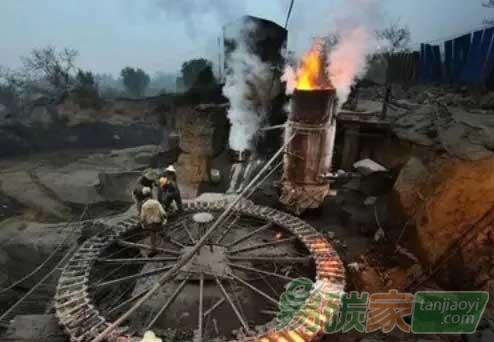人大代表王毅提交議案,建議在十三五規劃中納入強制性
碳排放總量控制目標,以保障碳排放峰值目標的實現。“十三五”碳排放總量控制目標的量化已經有比較充分的依據。
全國人大代表、中科院科技
政策與管理科學研究所所長王毅提交議案,建議科學設定與實施國家十三五碳排放總量控制目標,以保障碳排放峰值目標的實現。基于諸多研究機構在2013年的測算,王毅預測中國2030年前后的排放總量將約在110億噸左右。
王毅在議案中稱,碳排放總量控制目標是實現“2030年左右達到碳排放峰值且努力早日達峰”的必然要求。并且“十三五”碳排放總量控制目標的量化已經有比較充分的依據。結合經濟發展目標,以及逐步強化的大氣污染防治目標,可以確定一個碳排放總量的范圍。
在2014年11月的《中美氣候變化聯合聲明》中,中國已經宣布計劃在2030年左右實現二氧化碳排放峰值,但并未明確峰值總量。
王毅早先接受中外對話專訪時談到“十三五”規劃期間,為了應對嚴重灰霾等
問題,在約束性目標方面,除了繼續執行強度目標(能源強度、
碳強度)之外,應該考慮更多的總量控制目標。
延伸閱讀:中國應設立碳排階段性總量控制目標 方能突顯其減排決心
這些目標包括2020年碳排放強度在2005年基礎上下降40-45%, 2020年非化石能源消費比例達到15%,2030年非化石能源消費比例達到20%;2020年一次能源消費總量控制在48億噸標準煤左右,煤炭消費總量控制在42億噸左右等。
基于“2013年國民經濟和社會發展統計公報”中的2013年能源消費數據,清華大學低碳發展研究院、勞倫斯伯克利實驗室等研究機構對此進行了測算。測算顯示中國2030年的能源相關碳排放達到峰值時總量約在110億噸左右。
在《建議》中,王毅指出碳總量是涵蓋經濟、能源、環境全面發展狀況的綜合性指標,設定碳排放總量控制目標能協調已有的能源、環境等約束性指標,還能夠避免單純的使用能源總量約束帶來的潛在的經濟發展限制,為發展清潔能源留出創新空間。同時也是制定碳
市場配額總量的基礎,可以提供長期穩定的政策信號,提高市場活力,形成合理碳價格。
以往將碳強度指標分配給省、市等地方政府,而實際排放源是企業。地方政府管理企業履行碳排放控制目標,缺少制度基礎,客觀上存在排放主體與責任主體錯配的問題。
因此,王毅提出未來國家
碳市場的設計與實施,可以覆蓋主要行業的碳排放源,同時鼓勵有條件的地區爭取在2020年達到峰值。
英文版
Wang Yi, a representative to China's communist-dominated legislature and director of the Chinese Academy of Sciences’ Institute of Policy and Management, has proposed a science-based carbon cap to ensure China achieves peak carbon on schedule.
Based on predictions made in 2013 by a number of research institutions, Wang expects China’s carbon emissions to peak at about 11 billion tonnes in around 2030.
According to Wang’s proposal, a carbon cap is required if peak carbon is to be achieved by 2030, although reaching that goal is seen as having stronger motivation compared to Chinese policy earlier this decade. The 13th FYP aims at a more sustainable pace of economic growth and attempts to curb chronic air pollution.
In the November 2014 China-US Joint Statement on Climate Change, China announced that carbon emissions would peak around 2030 – but did not say at what level.
Wang has long been a proponent of energy and carbon intensity targets, and an overall carbon cap that could also help in the fight against smog.
See also: A carbon cap would show China's determination to tackle climate change
Those existing targets include a 40%-45% drop in carbon intensity on 2005 levels by 2020; increasing non-fossil fuel sources of energy to 15% of the energy mix by 2020 and 20% by 2030; and for primary energy consumption to be held at about 4.8 billion tonnes of coal equivalent.
The Chinese government has also mandated that total coal consumption should be capped around 4.2 billion tonnes by 2020.
Research bodies including Tsinghua University’s Laboratory of Low Carbon Energy and the Lawrence Berkley National Laboratory have predicted that China’s total carbon emissions from energy consumption would peak at about 11 billion tonnes in 2030.
Wang’s proposal says a carbon cap would avoid possible restrictions on economic growth that might result from a simple energy cap, and allow space for development of clean energy.
A cap also provides the foundation for carbon markets and quotas, by sending a long-term price signal to individual companies.
